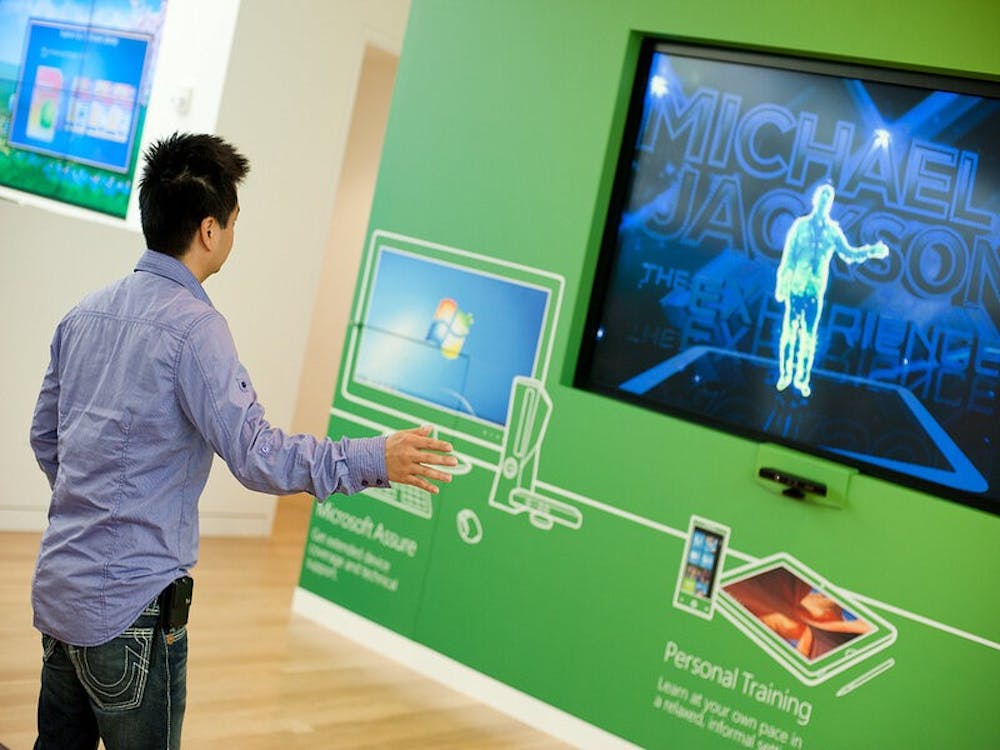Ten years ago, Microsoft graced the world with their $150 webcam. The Kinect was the company’s attempt at controller-free gaming, during a time where motion controls were at their most popular with the Nintendo Wii. Microsoft believed their rectangular camera stand would supersede the Wii and become the next big thing to transform home entertainment, spending $500 million on advertising alone.
The device launched Nov. 4, 2010, and the rest, unfortunately for Microsoft, is a disappointing, bleak history that found its end in 2017 when the company officially discontinued the Kinect. From revolutionary technology to now my most prominent dust-collector, the Kinect has become a long-forgotten camera stand to the world. Its 10th anniversary, however, gives me the perfect excuse to reminisce on my gaming youth and hammer in the reasons for Kinect’s failure.
The Nintendo Wii brought so much joy, and Microsoft’s first mistake was attempting to rival it. The console sold millions of units for Nintendo with its family-friendly interface and iconic first-party games like Mario and Zelda, but the Wii really skyrocketed because of Nintendo’s innovative take on motion controls. The Wii controller’s odd rectangular shape and button setup took getting used to, but when paired with the Wii Motion sensor, the player’s movements became an essential part of the game. You don’t have to look further than the console’s launch game “Wii Sports” to see the revolutionary technology in action.
"Wii Sports" went against every preconceived notion of a typical video game in that it was a multi-sport simulator for the entire family. It blew away my six-year-old expectations by turning me into an agile tennis player, a perfect bowler and mediocre golfer just by moving my arms. The games were competitive and turned into full-blown workouts by the end of it, but they also united friends and families in a way that hadn’t been achieved in video games before.
It’s safe to say the Kinect didn’t have a remotely comparable game to "Wii Sports" when it first released, but Microsoft definitely tried with “Kinect Adventures!” This game was a collection of five unrelated minigames that didn’t offer a lot of replayability, mainly because they honestly weren’t fun to begin with. I can vaguely recall jumping up and down in my living room trying to control a colorful raft down a rapid, obstacle-filled stream, but beyond that it was a disappointing way to showcase the Kinect’s movement-scanning ability. The only reason I had it was because Microsoft wouldn’t allow me to purchase a Kinect without it, and this forceful method of packaging “Kinect Adventures!” with the Kinect is the only reason the game reportedly sold 24 million units worldwide.
“Kinect Adventures!” represents one of the main reasons why Kinect failed: the motion controls were atrocious. Every time I wanted to use a Kinect-supported game, I stood in front of the camera stand, uselessly hoping the Kinect would notice me instantly. While this was a nuisance I could overlook, the real trouble arose when the Kinect would repeatedly lose track of where I was during a game. I would jump too high or dive too low in the raft-down-the-river game and the Kinect would go into panic mode, pause and kindly ask me to stand still while it tried to figure out what went wrong. This cycle effectively took me out of the game each and every time: even if I started to have just a sliver of fun, the Kinect made sure it never lasted longer than a few minutes.
Despite all of the Kinect’s motion and gameplay shortcomings, the Kinect did offer good moments at times. The voice commands for Kinect were innovative for game consoles at the time and saying “Xbox pause” or “Xbox turn off” without having to press any buttons was actually a neat addition for the Xbox. I found comfort in the fact that millions of people also regrettably bought a Kinect, so much so that Microsoft released a Kinect-free Xbox One. The gaming community’s shared dislike for the Xbox 360 version of connect transferred to the Xbox One’s Kinect 2.0 seamlessly, and Microsoft’s effort to place a Kinect into every household became a delusional expectation.
Kinect was novel for the gaming industry, but it lacked a catalogue of good games and consistency to even put up a fight against the Wii. As the Kinect fades away from everyone’s memory, it’s important to note that the Kinect walked and stumbled so current augmented reality and face ID scans could run. Its camera technology improved significantly with the Kinect 2.0, and tracking faces and body movements in 2020 is something we now take for granted. So although the Kinect may be long gone and surely forgotten after only 10 years, it still found a way to shape our everyday lives.
Get The Chronicle straight to your inbox
Signup for our weekly newsletter. Cancel at any time.

